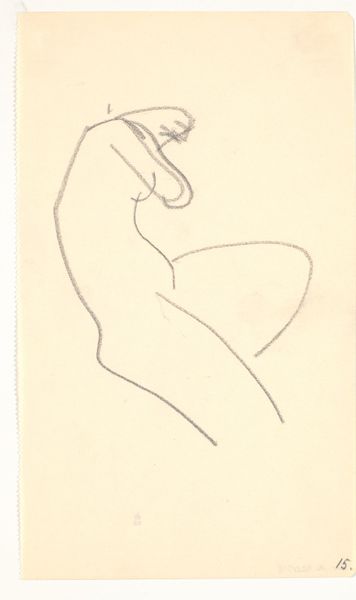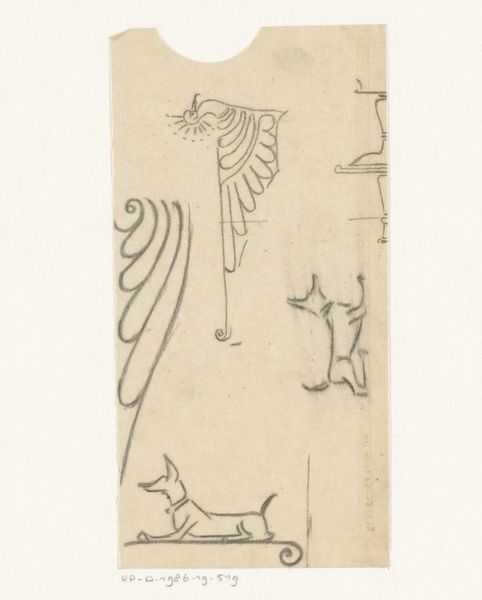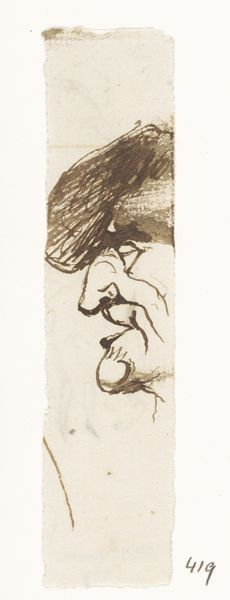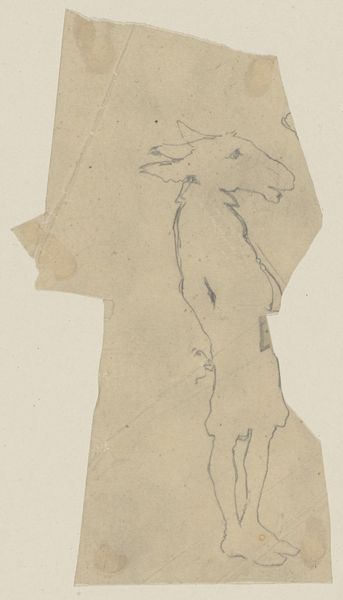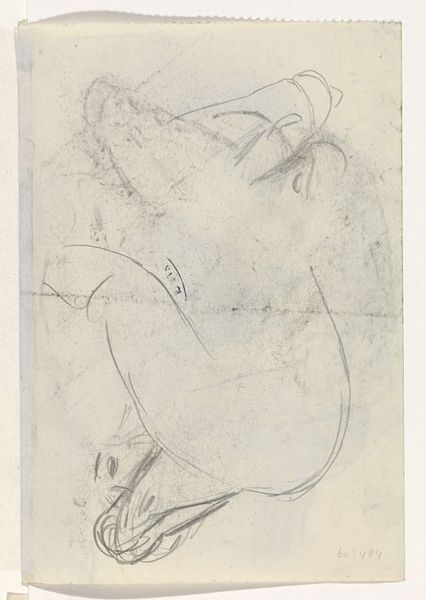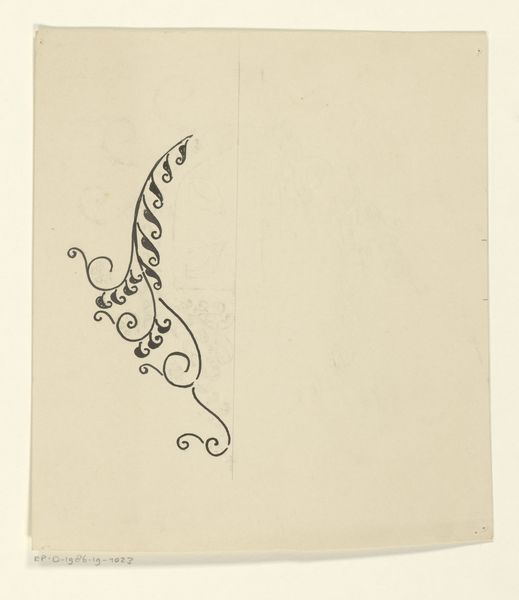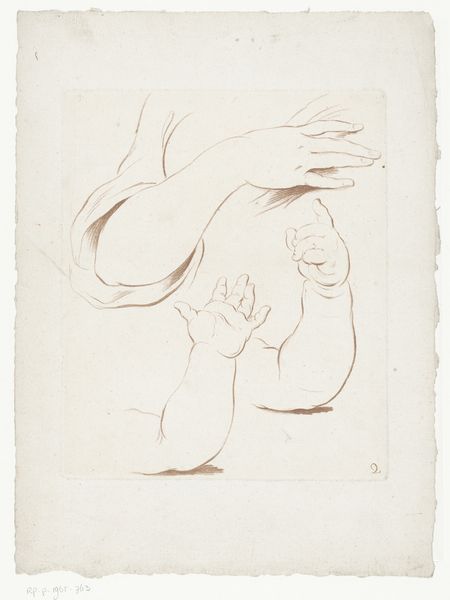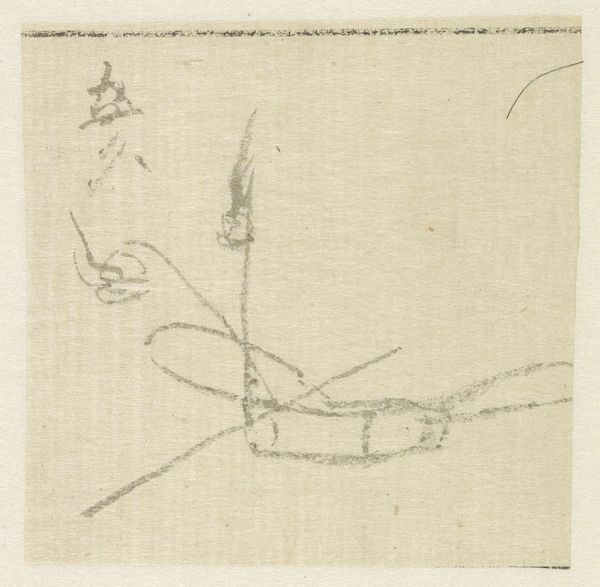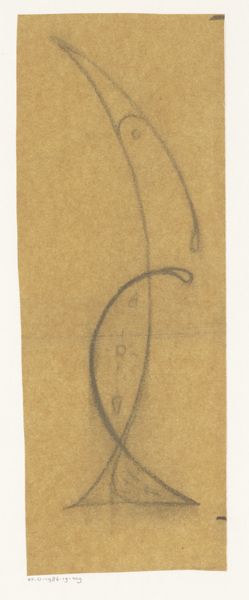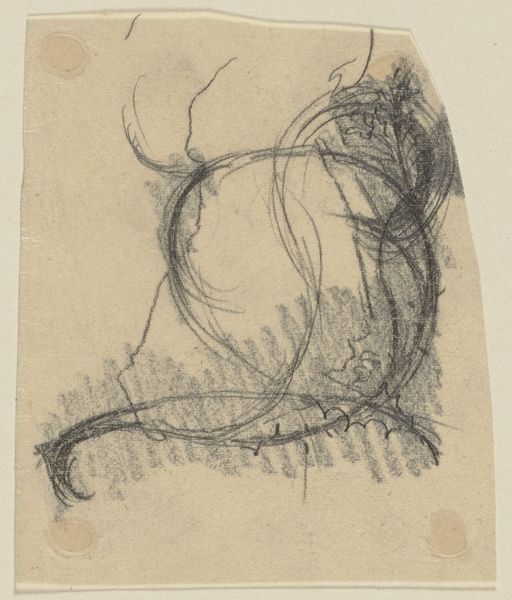
drawing, pencil
#
drawing
#
amateur sketch
#
toned paper
#
light pencil work
#
art-nouveau
#
hand drawn type
#
personal sketchbook
#
ink drawing experimentation
#
geometric
#
pen-ink sketch
#
pencil
#
sketchbook drawing
#
decorative-art
#
sketchbook art
#
initial sketch
Dimensions: height 100 mm, width 76 mm
Copyright: Rijks Museum: Open Domain
Curator: Before us, we have "Ornamenten," a drawing rendered in pencil by Reinier Willem Petrus de Vries, sometime between 1884 and 1952. Editor: My first impression is quiet simplicity, it's very sparse in detail but the curving lines create a sense of rhythmic movement despite the geometric elements attempting to contain it. Curator: Indeed. Structurally, the work utilizes a fascinating juxtaposition of organic and geometric forms, adhering to Art Nouveau principles. Note how the stylized floral and curvilinear shapes interact with the hard edges and precise angles of the bordering lines. The tension created by the lines is critical. Editor: But what interests me more is the materiality of the sketch itself. It looks like it's on simple toned paper, probably a sketchbook page, suggesting this was less about high art and more about experimentation or perhaps a preparatory sketch for a larger work. Curator: Perhaps so, but we must also consider its decorative purpose. De Vries was clearly invested in form, and shape. Look how the patterns, though minimal, could easily translate into architectural details, or perhaps textile designs. Editor: I wonder what sort of labour this kind of ornamentation required. It makes me curious about the artist’s studio, the availability of materials at the time, the cultural value placed on decorative arts, and if Vries perhaps envisioned these elements in mass production at some point. Curator: A fascinating question to consider. And while that consideration matters, one cannot disregard the subtle elegance and the sophistication with which simple lines come together in an expression that encapsulates a time period with such poise. Editor: Exactly! By looking at it closely from the standpoint of materiality, we see beyond its aesthetic value. Its creation mirrors socioeconomic factors and even the artistic practice. The means behind the work. Curator: It has been very enlightening to delve into "Ornamenten" from our two standpoints. Editor: Yes, seeing art through varying prisms brings depth to understanding a piece like this. Thank you.
Comments
No comments
Be the first to comment and join the conversation on the ultimate creative platform.


